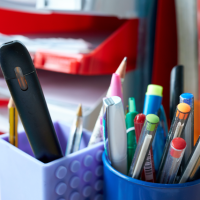What is Social Emotional Learning?
Social Emotional Learning (SEL) is a framework that equips individuals with essential life skills to understand themselves and others, manage emotions, build strong relationships, and make responsible decisions.
According to the Collaborative for Academic, Social, and Emotional Learning (CASEL):
“Social emotional learning is the process through which children and adults acquire and effectively apply the knowledge, attitudes, and skills necessary to understand and manage emotions, set and achieve positive goals, feel and show empathy for others, establish and maintain positive relationships, and make responsible decisions.”
SEL fosters personal growth, academic success, and workplace readiness by providing students with the tools they need to navigate challenges, regulate emotions, and engage positively with their environment.
The Five Core SEL Competencies
There are five key areas of social and emotional learning:
- Self awareness – understanding personal emotions, values, and goals
- Self management – regulating emotions and behavior
- Social awareness – understanding and having empathy for others
- Relationship skills – establishing and maintaining healthy relationships with appropriate behavior
- Responsible decision making – evaluating consequences and making good choices across different situations
These competencies empower students to succeed in school, careers, and personal relationships.
Why is SEL Important?
When students develop social and emotional skills, they are better equipped to:
- Improve academic performance
- Build resilience & manage stress
- Foster positive relationships with peers & teachers
- Reduce disruptive behaviors & emotional distress
- Increase their likelihood of graduating high school & attending college
- Feel more connected to their families, schools, and communities
Helping Diverse Students
SEL plays a crucial role in helping students of all backgrounds succeed by:
- Providing coping strategies for students facing adversity
- Creating inclusive classrooms that celebrate diversity and emotional well-being
- Supporting trauma-informed education by helping students process difficult experiences
- Assisting students with learning disabilities in developing emotional regulation skills
By building emotional intelligence, SEL ensures that all students feel valued, understood, and supported in their academic journey.
Building SEL into Classrooms and Schools
Most effective SEL programs involve four elements represented by the acronym SAFE:
- Sequenced: coordinated activities to promote skill development
- Active: active forms of learning for students to practice and master new skills
- Focused: emphasis on developing personal and social skills
- Explicit: specific, defined, and targeted social and emotional skills
Social and emotional development in students involves activities that are interpersonal and student-centered, promoting student voice, autonomy, and engagement.
- Student-teacher interaction and support to build and model trusted relationships
- Activities that encourage students to explore feelings, such as personal reflections and examining character motivations in literature
- Modeling positive self-talk and growth mindset (the idea you can learn from hard work and dedication)
- Modeling respectful disagreements in group work and discussions
- Activities that build positive relationships and a sense of community, like advisories
- Bullying prevention practices
- Providing community resources and supports, like counseling
Promoting Positive School Climate Through SEL
Building social and emotional skills helps students become positive and engaged, nurturing growth and responsibility. To prevent specific campus issues such as alcohol, substance abuse, and bullying, schools can equip students with programming that not only educates, but provides the social and emotional skills for self-awareness and good decision-making.
At 3rd Millennium Classrooms, we design our online prevention and intervention courses with social and emotional learning in mind. To motivate real behavior change, our modules involve evidence-based SEL-informed practices, such as:
- Using reflection and evaluation – What are good and bad choices, and what outcomes did those choices have?
- Identifying reasons and triggers – What circumstances and stressors lead to problem behavior?
- Protective behaviors – What alternative behaviors and limit-setting can a person reasonably do to avoid repeating problem behavior?
- Making a plan – How does a person plan to act in certain situations?
- Personalized feedback – Each student gets tailored summaries of personal behavior, including comparing their behavior with those of their peers and estimating the risk of future problems.
By equipping students with the skills to understand, manage, and express emotions and resolve conflicts, social and emotional learning nurtures students who are sensitive, thoughtful, healthy, and connected, leading to well being and success.




